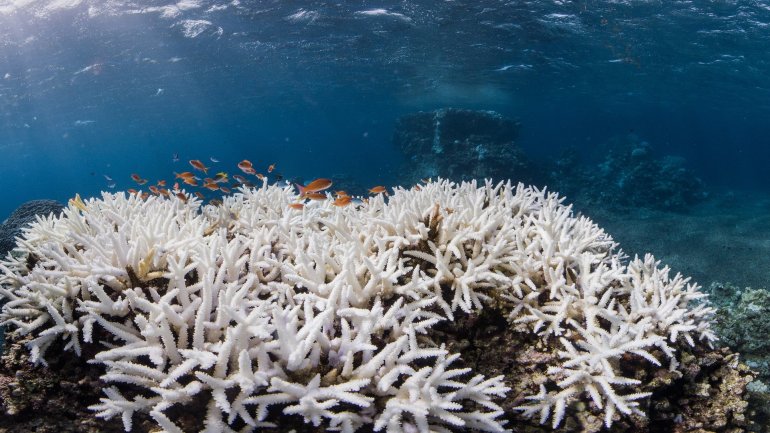Report: Almost 75% of Japan biggest coral reef dead from bleaching
 foto: The Ocean Agency
foto: The Ocean Agency
Almost three-quarters of Japan’s biggest coral reef has died, according to a report that blames its demise on rising sea temperatures caused by global warming, informs The Guardian.
The Japanese environment ministry said that 70% of the Sekisei lagoon in Okinawa had been killed by a phenomenon known as bleaching.
Bleaching occurs when unusually warm water causes coral to expel the algae living in their tissues, causing the coral to turn completely white. Unless water temperatures quickly return to normal, the coral eventually dies from lack of nutrition.
The plight of the reef, located in Japan’s southernmost reaches, has become “extremely serious” in recent years, according to the ministry, whose survey of 35 locations in the lagoon last November and December found that 70.1% percent of the coral had died.
The dead coral has now turned dark brown and is now covered with algae.
The ministry report follows warnings by the Coral Reef Watch programme at the US National Oceanic and Atmospheric Administration that global coral bleaching could become the “new normal” due to warming oceans.
Experts said that bleaching had spread to about 90% of the Sekisei reef, a popular diving spot that covers 400 sq km.
A similar survey conducted in September and October last year found that just over 56% of the reef had died, indicating that bleaching has spread rapidly in recent months.
International
- Climate change: Fresh doubt over global warming "pause"
- Huge Antarctic iceberg poised to break away (PHOTO)
- Japan's richest man Tadashi Yanai loses £1.15bn in single day
- Emperor Akihito: Japan considers moves to allow 2018 abdication - reports
- Bird species vanish from UK due to climate change and habitat loss
- Japan rescues 26 North Koreans from sinking ship